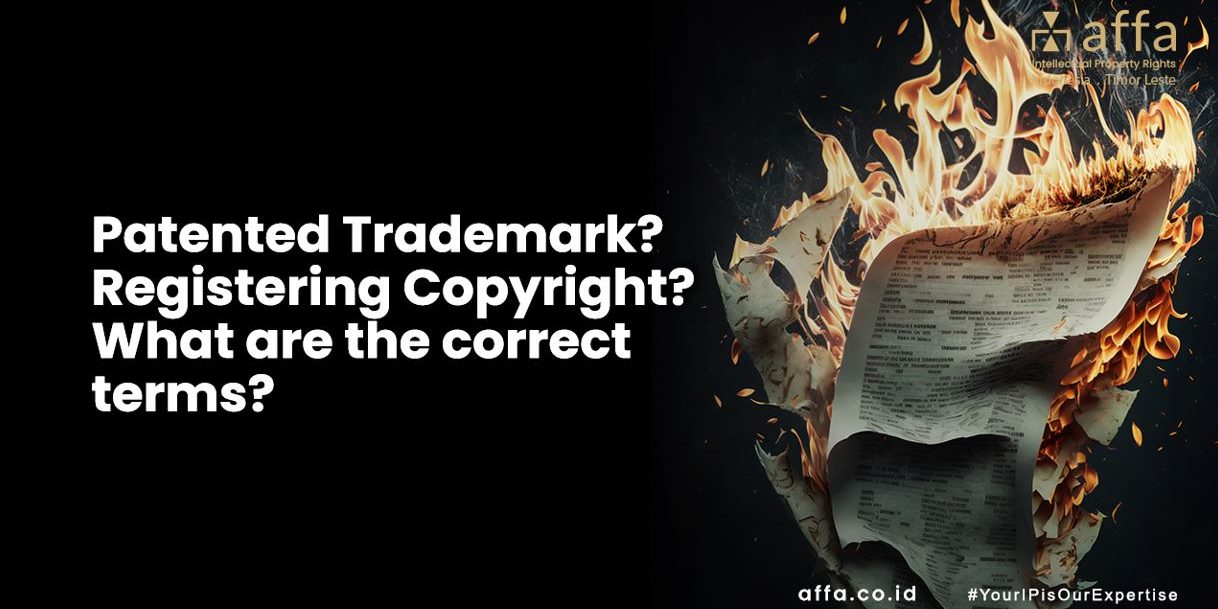Patents are only one of the Intellectual Property objects recognized by the state as stated in Law Number 13 of 2016 concerning Patents. However, according to the Indonesian Dictionary, Patent has a general definition as “a right granted by the government to someone for an invention for their own use and to protect it from imitation (piracy),” then misperception has spread widely, including to the media and some officials.
So that the terms “patented a trademark” or “patented [fill in the name of any food here]” are what we usually hear in Indonesia.
In fact, according to Patent Law, a Patent is an inventor’s exclusive right to an invention in the field of technology for a certain period of time to implement it himself or to give approval to another party to carry out his invention. So the emphasis should be on innovation in the field of technology. An invention itself is an inventor’s idea that is translated into a specific problem-solving activity in the field of technology, which can be in the form of a product or process or improvement and development of a product or process.
Furthermore, Patents are granted for inventions that are new, contain an inventive step, and are industrially applicable. While Simple Patents are granted for any new invention, development of an existing product or process, and can be applied in industry. Simple Patents are granted for inventions in the form of products that not only differ in technical characteristics, but must have functions/uses that are more practical than previous inventions due to their shape, configuration, construction, or components which include tools, goods, machines, compositions, formulas, compounds or system. Simple Patents are also granted for inventions in the form of new processes or methods.
Therefore, a Trademark which is a sign that distinguishes one good or service from another, as well as food, is not appropriate to be “patented,” because it does not meet the criteria of the Patent itself.
Trademark is an object in itself in Intellectual Property which is regulated in Law Number 20 of 2016 concerning Trademarks and Geographical Indications. While food does not contain technological inventions in it. It is almost certain that in the process of making food, nothing will intersect with technological inventions that contain elements of novelty, are unpredictable, and can be applied in industry.
Another reason food is not right to be patented is the element of secrecy in the manufacturing process, which is of course the uniqueness of the food we make. Because if registered as a Patent, the recipe must be published. This means everyone can use the recipe after the expiration of the Patent protection, 10-20 years later. In other words, we have limitations in obtaining exclusivity for innovation from the food we have.
However, that does not mean that food cannot be protected by Intellectual Property. Food can still be protected by Trademarks and or Trade Secrets. The way to protect it is by registering the food Trademark to the DGIP (Directorate General of Intellectual Property), as stipulated in Article 1 of the Trademark Law, using pictures, names, words, letters, numbers, color arrangements, or a combination of these elements. elements that have discriminatory power.
If we already have a registered Trademark, then we have a strong basis to prevent other people from using the same or substantially the same Trademark in circulation for similar goods/services.
Then there are Trade Secrets which are also the right solution for protecting the food recipes that we have. As defined in Article 1 paragraph (1) of the Trade Secret Law, Trade Secrets are information that is not known by the public in the field of technology and/or business, has economic value because it is useful in business activities, and is kept confidential by the owner of the Trade Secret. The scope of protection for Trade Secrets includes production methods, processing methods, sales methods, or other information in the field of technology and/or business that has economic value and is not known by the general public, including food/beverage recipes, formulas, production processes, client lists or marketing plans.
The unique thing is, to get protection for Trade Secrets, we don’t need to register them to DGIP, but by doing a number of activities must be done and must also be avoided in order to avoid losing this protection. You can read more about Trade Secret protection in our previous article: “Protecting Your Food Recipes: A Step-by-Step Guide.“
Meanwhile, Copyright is an Intellectual Property object that has the broadest scope of protection, because it includes science, art and literature, which also includes computer programs. What’s unique is that the exclusive right to a creation arises automatically based on the declarative principle after a creation is declared or manifested in a tangible form. Therefore, Copyright does not need to be registered to get its protection. However, in order for our creation to have stronger legal protection, where we have legal proof of ownership when a dispute occurs, we need to record them in the DGIP database. The recordation process, which is much simpler than the patent and trademark registration process, can provide copyright owners with a sense of security.
By understanding the different types of Intellectual Property objects, we can differentiate their treatment, as a first step towards obtaining proper protection. So that we no longer use the terms “patented trademark”, “patent of a copyright,” or “registering copyright”.
If you need further information regarding Patent registration, Trademark registration, Copyright recordation, or further consultation regarding the drafting of Trade Secret agreements in Indonesia and abroad, please do not hesitate to contact us via [email protected].








1 Comment